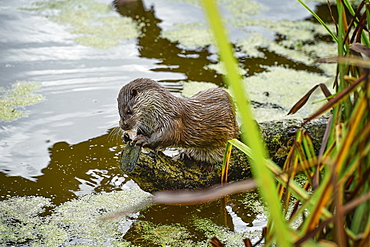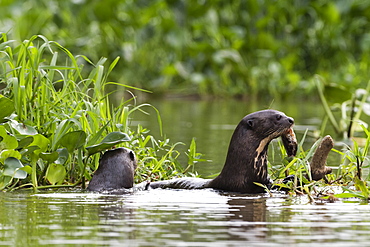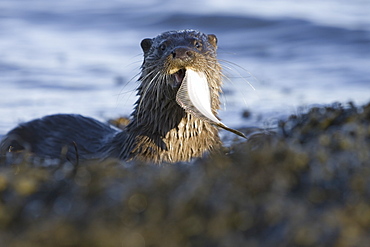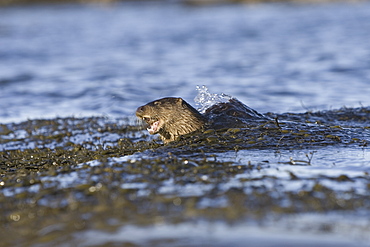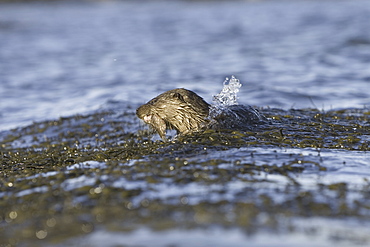Results
16 results found
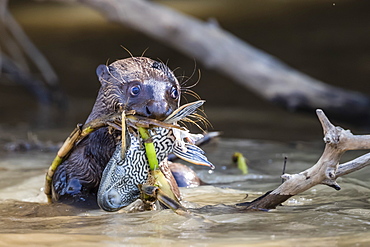
Giant river otter (Pteronura brasiliensis), feeding near Puerto Jofre, Mato Grosso, Pantanal, Brazil, South America
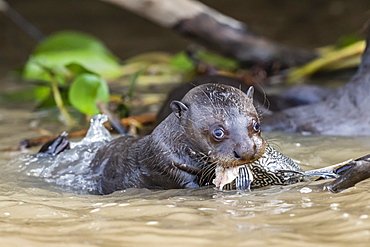
Young giant river otter (Pteronura brasiliensis), feeding near Puerto Jofre, Mato Grosso, Pantanal, Brazil, South America
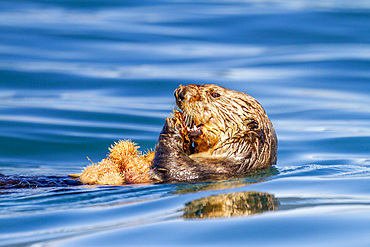
Adult female sea otter (Enhydra lutris kenyoni) eating urchins she has gathered off the sea floor in Inian Pass, Southeastern Alaska, Pacific Ocean, United States of America, North America
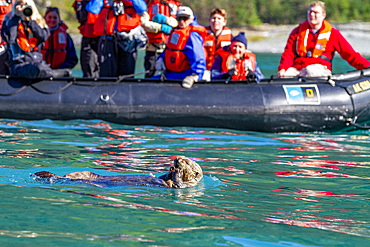
Guests from the Lindblad Expeditions ship National Geographic Sea Bird during Zodiac operations near a feeding sea otter in Southeast Alaska, United States of America, North America
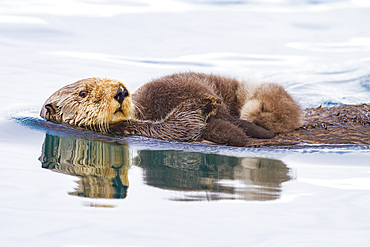
Adult sea otter (Enhydra lutris kenyoni) mother and pup in Inian Pass, Southeastern Alaska, United States of America
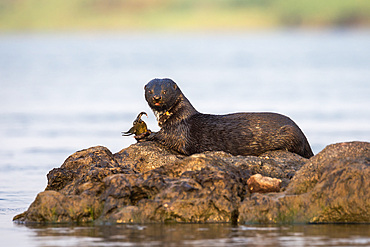
Spotted necked otter (Hydrictis maculicollis) eating leopard squeaker fish, Chobe River, Botswana, Africa

An adult sea otter (Enhydra lutris), feeding on a razor clam in Monterey Bay National Marine Sanctuary, California, United States of America, North America
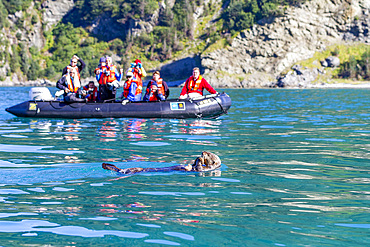
Guests from the Lindblad Expeditions ship National Geographic Sea Bird during Zodiac operations near a feeding sea otter in Southeast Alaska, United States of America, North America

A mother and pup sea otter (Enhydra lutris), sharing a clam meal in Elkhorn Slough near Moss Landing, California, United States of America, North America
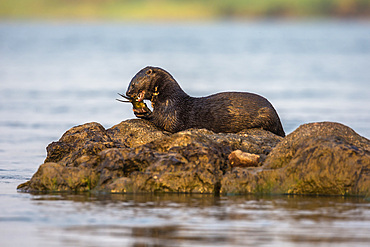
Spotted necked otter (Hydrictis maculicollis) eating leopard squeaker fish, Chobe River, Botswana, Africa
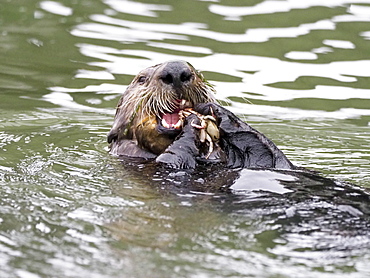
An adult female sea otter (Enhydra lutris), feeding on a crab in Elkhorn Slough near Moss Landing, California, United States of America, North America
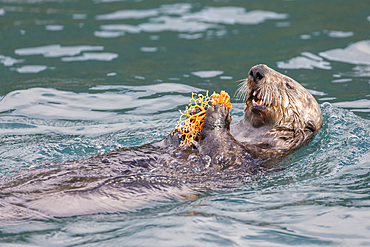
Adult sea otter, Enhydra lutris, feeding on a basket star in the Inian Islands, Southeast Alaska, USA.
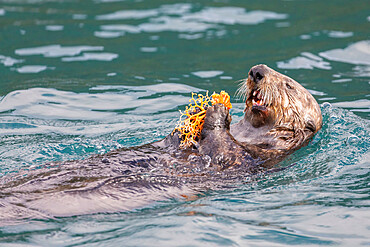
Adult sea otter, Enhydra lutris, feeding on a basket star in the Inian Islands, Southeast Alaska, USA.
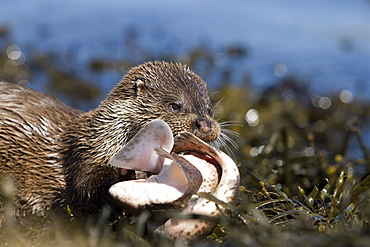
Eurasian river otter (Lutra lutra) eating Greater spotted dogfish (Scyliorhinus stellaris). The otter took only the innards of the dogfish by opening a short section of skin behind the pectoral fin (see images under 'Greater spotted dogfish'). The rest of the fish, still alive, was left on the shore and never retrieved. Perhaps the tough shark skin and battling fish are too much work when other food is plentiful? Hebrides, Scotland
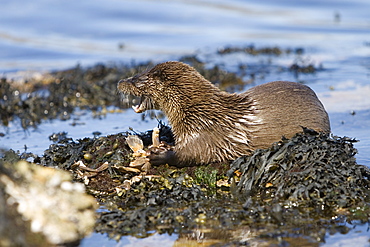
Eurasian river otter (Lutra lutra) eating a large crab. Large fish and crabs are difficult to constrain and eat in the water so are often brought ashore. Otters will sometimes swim realtively long distances in order to do so. Hebrides, Scotland
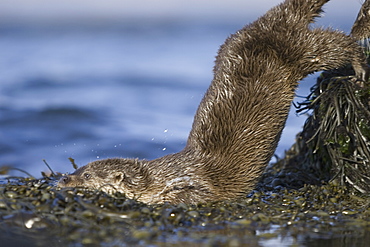
Eurasian river otter (Lutra lutra). Otters in western Scotland have adapted well to life in a marine environment, though proximity to sources of fresh water is essential. Hebrides, Scotland
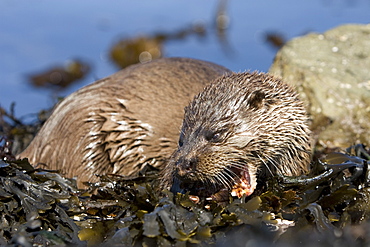
Eurasian river otter (Lutra lutra) eating fish, long-spined bullhead (Taurulus bubalis). Hebrides, Scotland
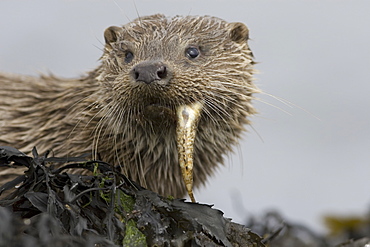
Eurasian river otter (Lutra lutra) eating fish. Otters have adapted well to the marine environment but require sources of fresh water to drink and to clean fur. Hebrides, Scotland
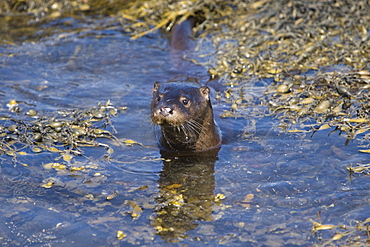
Eurasian river otter (Lutra lutra) foraging in and among the seaweed. Otters on Scotland's west coast and islands have adapted well to making a living in the marine environment. Hebrides, Scotland (RR)
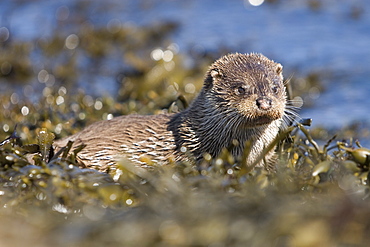
Eurasian river otter (Lutra lutra) having caught Greater spotted dogfish (Scyliorhinus stellaris). The otter took only the innards of the dogfish by opening a short section of skin behind the pectoral fin (see images under 'Greater spotted dogfish'). Hebrides, Scotland (RR)
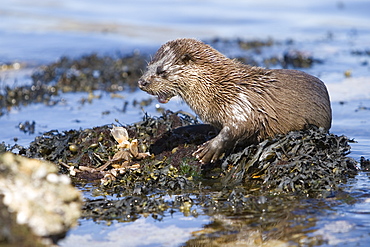
Eurasian river otter (Lutra lutra) eating a large crab. Large fish and crabs are difficult to constrain and eat in the water so are often brought ashore. Otters will sometimes swim realtively long distances in order to do so. Hebrides, Scotland

Eurasian river otter (Lutra lutra) mother eating fish with cub closeby. The cub tried unsuccessfully to obtain some of its mother's catch. Hebrides, Scotland
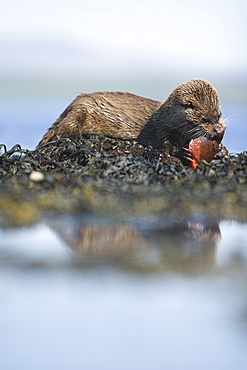
Eurasian river otter (Lutra lutra) eating a male lumpsucker (Cyclopterus lumpus) fish, also known as a sea hen or scarclagger. Hebrides, Scotland
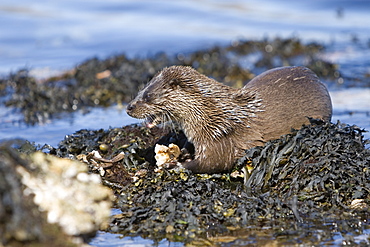
Eurasian river otter (Lutra lutra) eating a large crab. Large fish and crabs are difficult to constrain and eat in the water so are often brought ashore. Otters will sometimes swim realtively long distances in order to do so. Hebrides, Scotland
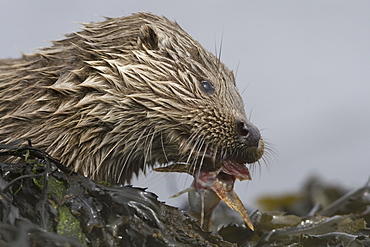
Eurasian river otter (Lutra lutra) eating fish. Otters have adapted well to the marine environment but require sources of fresh water to drink and to clean fur. Hebrides, Scotland
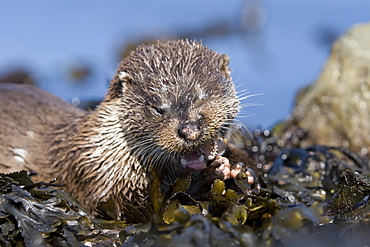
Eurasian river otter (Lutra lutra) eating fish, long-spined bullhead (Taurulus bubalis). Hebrides, Scotland
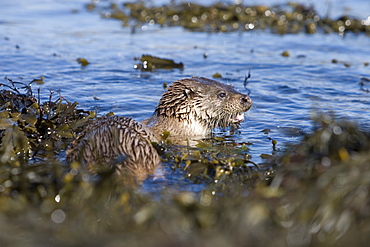
Eurasian river otter (Lutra lutra) having caught Greater spotted dogfish (Scyliorhinus stellaris). The otter took only the innards of the dogfish by opening a short section of skin behind the pectoral fin (see images under 'Greater spotted dogfish'). The rest of the fish, still alive, was left on the shore and never retrieved. Perhaps the tough shark skin and battling fish are too much work when other food is plentiful? Hebrides, Scotland
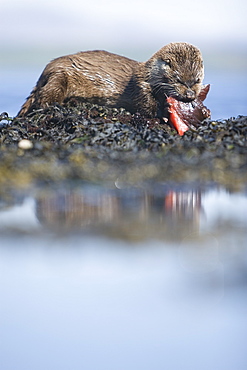
Eurasian river otter (Lutra lutra) eating a male lumpsucker (Cyclopterus lumpus) fish, also known as a sea hen or scarclagger. Hebrides, Scotland
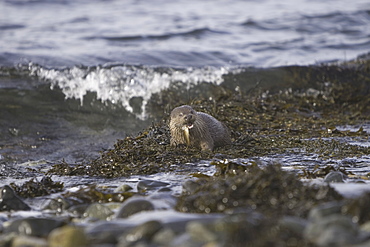
Eurasian river otter (Lutra lutra) eating fish. Otters in western Scotland have adapted well to life in a marine environment, though proximity to sources of fresh water is essential. Hebrides, Scotland
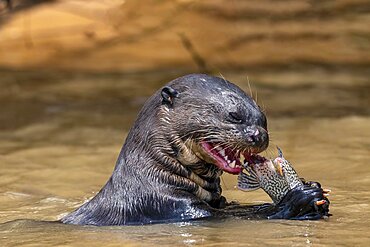
Giant otter (Pteronura brasiliensis), in the water, eating captured fish, animal portrait, Pantanal, Mato Grosso, Brazil, South America

European otter (Lutra lutra), adult, swimming, in water, portrait, foraging, Surrey, England, Great Britain

